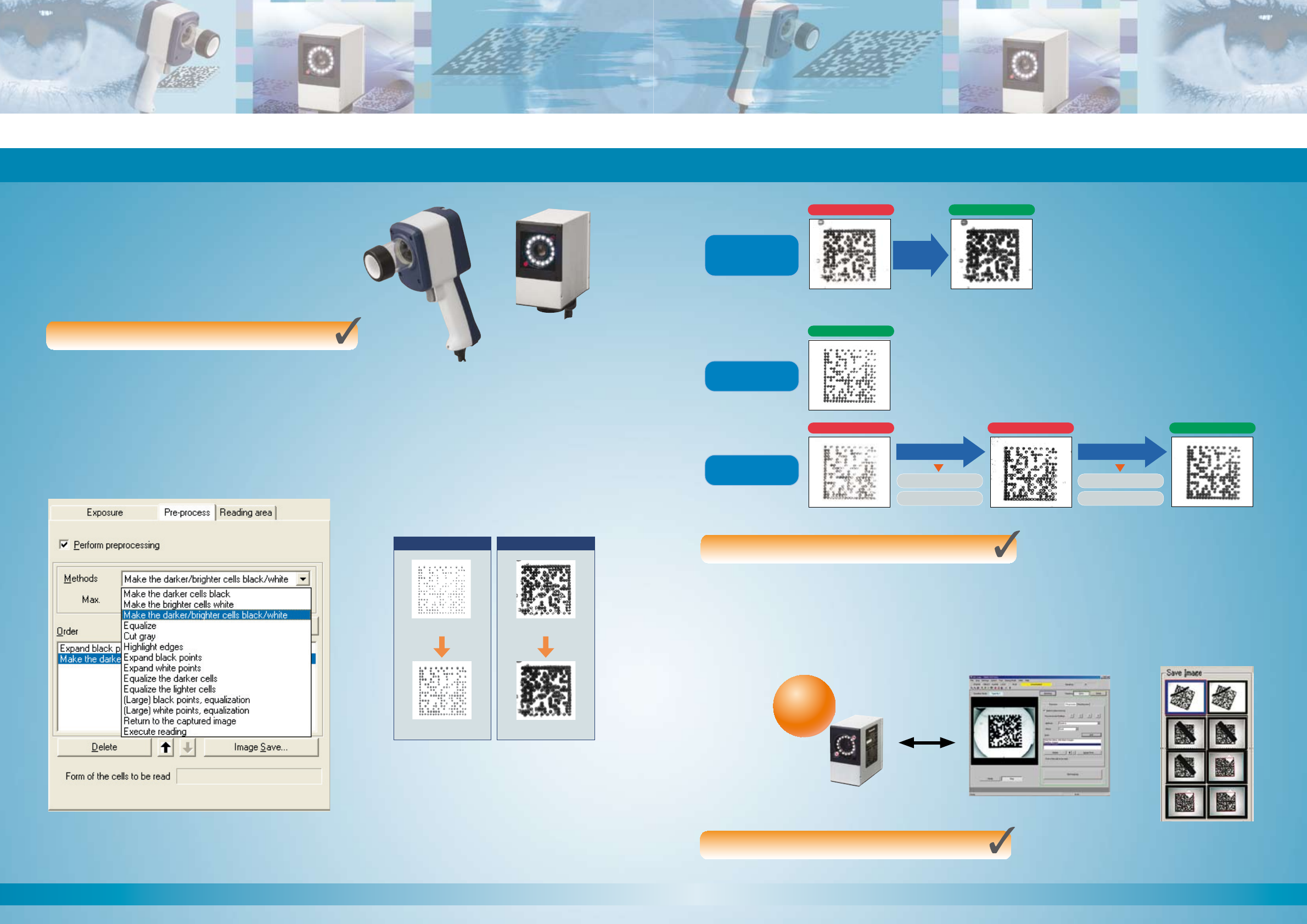
5
Integrated design
All components for lighting, optics, image acquisition
(camera) and signal processing (CPU) are combined
in one unit and are mutually optimized to ensure that
reading codes is performed quickly, reliably and with
virtually no maintenance.
Reliable code reading for DPM
Various original pre-processing algorithms are applied to allow
decoding even 2D codes that are difficult to read.
Real time image transfer and storage
Images with read errors (or all images) can be stored in the
main unit. In addition, using the free utility tool - PDTOOL–
images can be transferred to a PC and stored in specified
orders in real time.
2D code readers PD60/65
Common features
14 types of pre-processing are available. Settings are made by
simply selecting from a pull-down menu.
We have significantly improved the accuracy
of reading direct marking on metal (which is
highly problematic for automatic reading) and
image detection abilities by using our new
pre-processing functions and library.
Symbol reading error
With weak stamping pressure
With a coating of detergent
Read OK
Symbol reading error
Read OK
Detergent is caught in the
code, making donuts shapes.
The stamp is restored
by correcting the image.
Pre-
processing
Read Error
Read OK
Detection Error 1 Read Error Read OK
Read OK
Blacken cells
Equalize
Make black points larger
Equalize
Pre-processing Pre-processing
Improvement of
read accuracy due
to pre-processing.
No detergent
With detergent
Compact and place-saving solution
Code reading even under difficult conditions
Traceability made easy
Image
storage
USB
PDTOOL
4
11/2007








